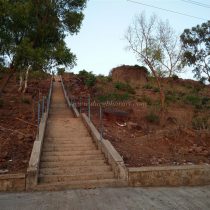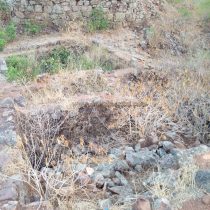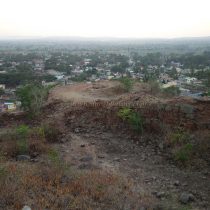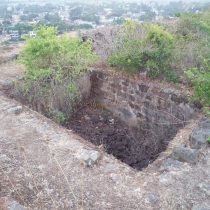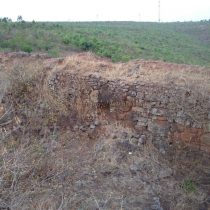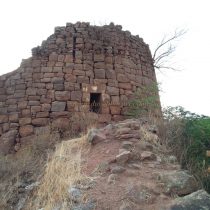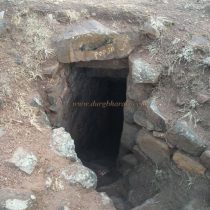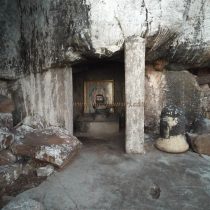KAKATI
TYPE : HILLFORT
DISTRICT : BELGAON
HEIGHT : 2660 FEET
GRADE : EASY
Just as Rani Lakshmibai of Jhansi played a great role in history, Rani Chennamma is revered as the first woman to undermine the British Empire. The small fort of Kakati is the birthplace of this brave queen Chennamma. This fort stands on a medium height hill at a distance of 5 km from Belgaon towards Kolhapur. The fort is located on the Belgaon-Karnataka highway and the hill of the fort with windmills in this flat region easily catches your eye. This small fort is built on a slope on one side of the hill. You can reach the base of the fort by car and from there it takes 10 minutes to reach the fort by climbing the newly constructed cement steps. As you go up the steps, you see huge boulders all around and the bastion on the top attracts your attention. In the construction of the fort, bastions and ramparts have been erected without the use of lime.
...
Although the fort is small in size, it is divided into two parts, Parkot, and the citadel. The fort has a total of three large bastions and the inner ramparts of the fort have collapsed up to a great extent. Due to the collapsed ramparts, it is not possible to predict where the main gate of the fort should be and we enter the fort through the collapsed ramparts. There are many rooms inside the fort and the entire fort has a serpentine rampart. There is a bastion at the top of the fort and there is an internal door to go up to the bastion. When you look from the bottom of the bastion, you can see the barrage on it for gunfire. Looking from the tallest bastion of the fort, one can see the entire area around the fort. Due to the neglect of the fort, a large number of shrubs have grown on the fort. There are two carved water cisterns and a built pond on the fort. But at present, both the cisterns are stocked with stones and are also dry. While walking from the ramparts of the fort, one can see limestone pasted on the rocks at a place in the lower part. There is a small cave in this place and it is seen that a Shivling has been established in this cave and two more Shivling can be seen outside the cave. As the fort is small, one hour is enough to explore the entire fort. The first mention of this fort is in the letter dated 28th July 1687. It is mentioned that Desai of Kakati Karyat and Desai Algauda of Hukeri province conquered Gandharvagad from the Marathas on behalf of the Mughals. For this work, the Mughals had promised to give Belgaon to the kakti Desai & Chandgad-Ajara to hukkeri Desai with one elephant. Queen Chennama of Kittur, India's first female freedom fighter, was born in 1778 in the village of Kakati near Belgaon to Dhulappa Desai and Padmavati. Chennamma learned Sanskrit, Marathi, Kannada, and Urdu at home. She also practiced horsemanship, weapons, and martial arts. She later married Mallasarja, the king of Kittur. After the death of King Mallasarja in 1816, Chennamma crowned her son, but her son also died in 1824, and the British had the opportunity to usurp the kingdom of Kittur. But Chennamma adopted Shivalingappa and crowned him. The British rejected the adoption and tried to capture Kittur. Since Chennama did not agree, she prepared to fight. She raised her army without fear of the huge British army. Thackeray, the Collector of Dharwad, was killed in the battle of 23rd October 1824, but the battle of Chennama did not last long. In a month and a half, Chennama was imprisoned on December 3, 1824, and the state of Kittur was annexed to Belgaon district by the British. Queen Chennama was imprisoned in the fort of Bailhonangal, where she died on 21 February 1829.
© Suresh Nimbalkar

